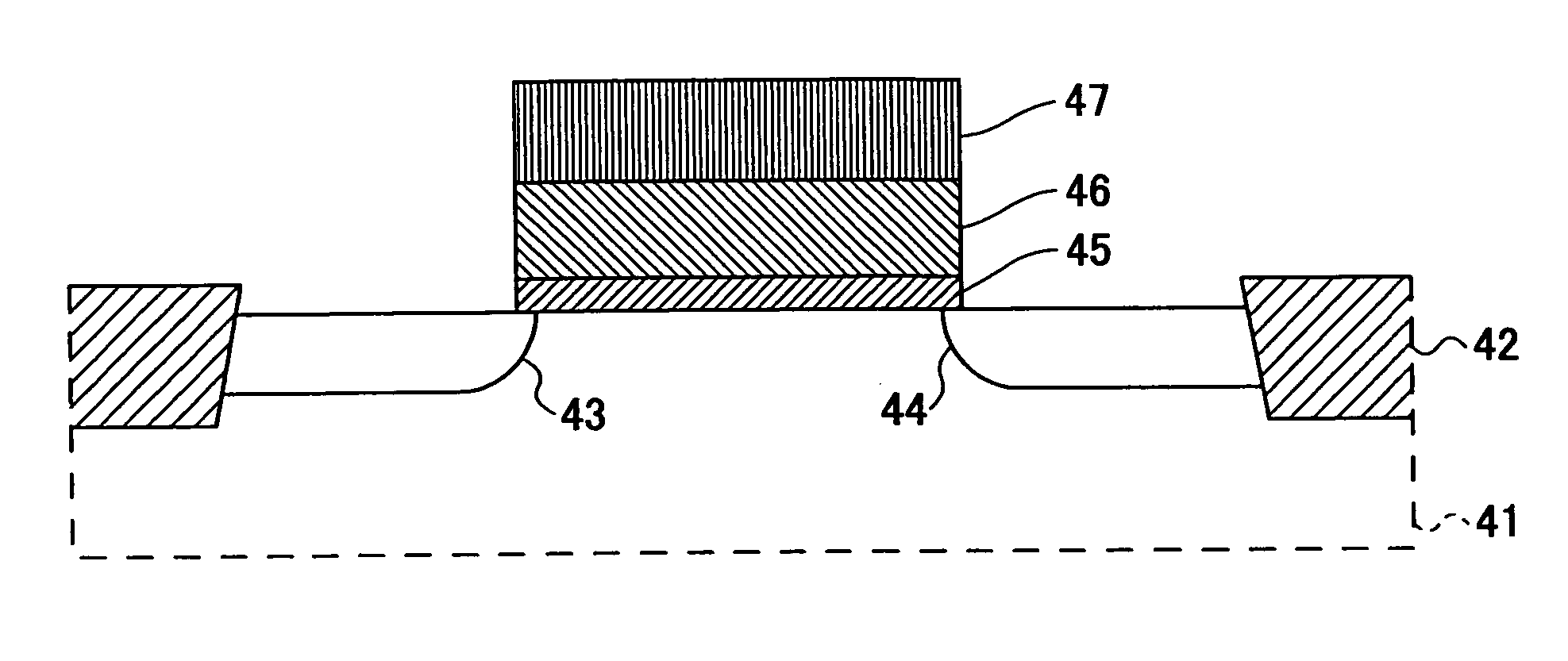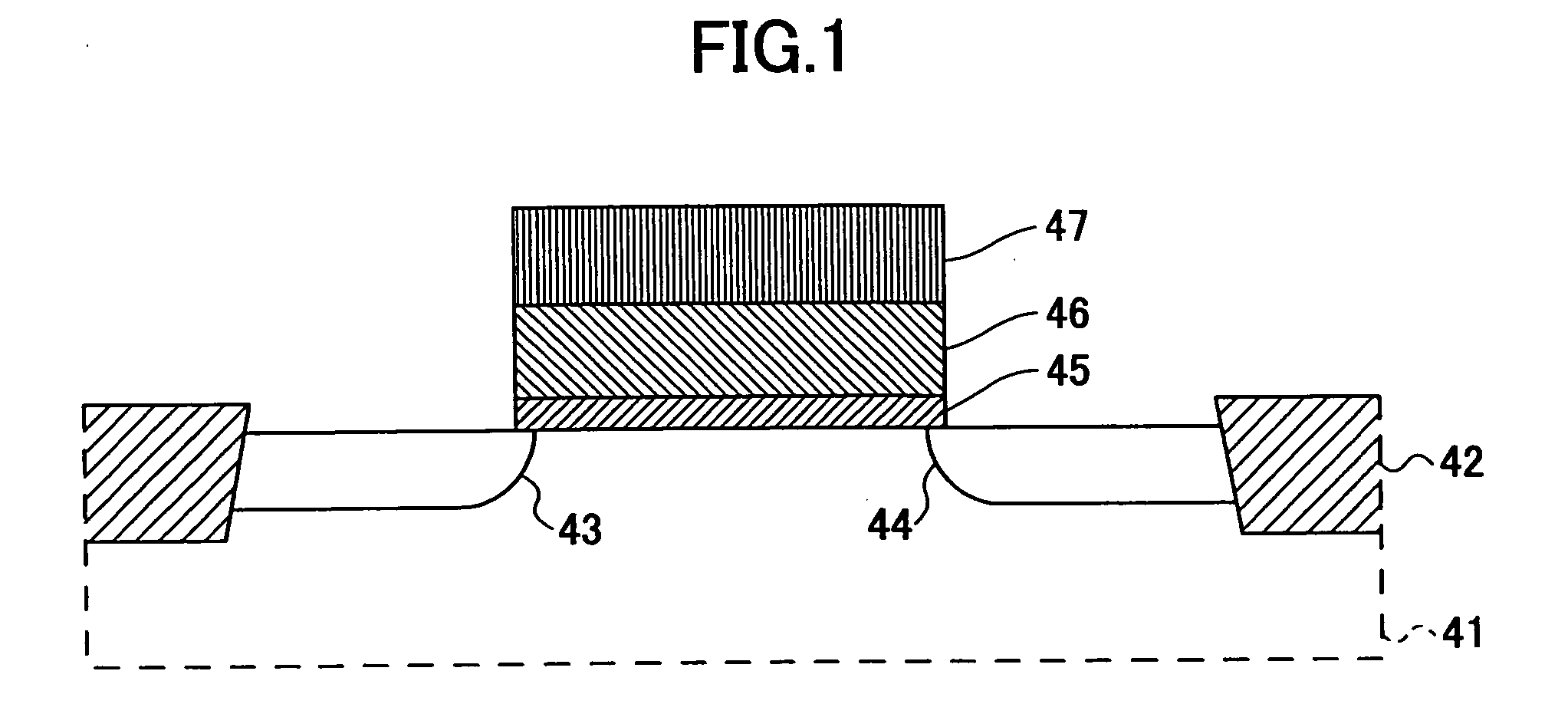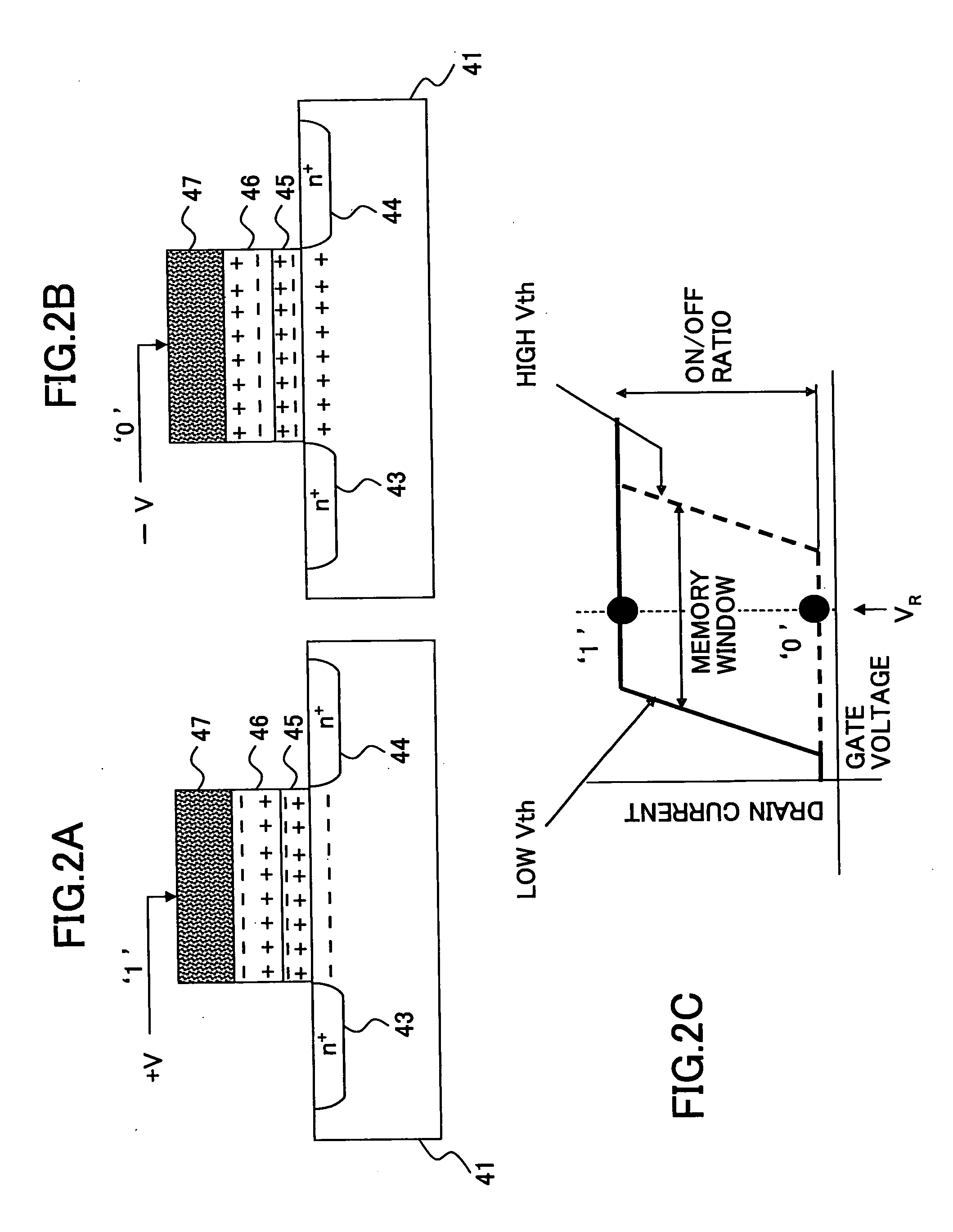Ferroelectric memory, multivalent data recording method and multivalent data reading method
a multi-valent data and recording method technology, applied in the field of ferroelectric memory devices, can solve the problems of increasing data retention time, short data retention time, and inability to local control polarization of such a ferroelectric film, and achieves excellent polarization characteristics, improve crystal quality, and increase the memory capacity of ferroelectric memory.
- Summary
- Abstract
- Description
- Claims
- Application Information
AI Technical Summary
Benefits of technology
Problems solved by technology
Method used
Image
Examples
first embodiment
[0070]FIG. 3A shows the construction of the memory cell of an FeRAM 10 of MFS type according to a first embodiment of the present invention.
[0071] Referring to FIG. 3A, there is defined a device region on the silicon substrate 11 by a device isolation structure 12 of STI (shallow trench isolation) type, and an n-type well 13 is formed in the silicon substrate 11 in correspondence to the device region.
[0072] Further, there is formed a gate structure 24 on the silicon substrate 11 in correspondence to a channel region to be formed in the device region 13, and p-type diffusion regions 16 and 17 are formed in the device region 13 at respective lateral sides of the gate structure 24. Thus, a p-channel MOS transistor is formed in the memory cell as a memory cell transistor.
[0073] The gate structure 24 includes an insulation film of stacked structure in which a silicon oxide film 20 formed on the silicon substrate 11 and an HfO2 film 19 are laminated, and a BNT ((Bi,Nd)4Ti3O12) film 21 ...
second embodiment
[0138] Hereinafter, a second embodiment of the present invention will be explained.
[0139] In the present embodiment, the width of the pulse voltage applied to the gate electrode is controlled to be 1 μs or less, such as 100 ns, at the time of writing data into the FeRAM 10 of the first embodiment, for avoiding occurrence of substantial carrier injection to the interface between the polycrystalline HfO2 film 19 and the SiO2 film 20 and associated shift of the memory window in the direction of positive voltage or negative voltage along with the writing operation.
[0140] Further, with the present embodiment, reading of data is made before conducting writing at the time of writing data to such an FeRAM 10, and writing is suppressed in the case the data to be written is identical with the data already written. With this, carrier injection to the foregoing interface is minimized.
[0141] Further, in the case the data to be written is different from the data that is already written, readin...
third embodiment
[0146] Next, the fabrication process of the FERAM 10 of FIG. 3A will be explained as a third embodiment of the present invention. In the drawings, those parts explained previously are designated by the same reference numerals and the description thereof will be omitted.
[0147] Referring to FIG. 13, the present embodiment uses a p-type silicon substrate as the silicon substrate 12, and an STI device isolation structure 12 is formed on the silicon substrate 11 similarly to the fabrication process of conventional MOSFET.
[0148] Further, an n-type well 13 is formed in the silicon substrate 11 in correspondence to a device region defined by the device isolation structure 12, and a dummy gate oxide film 14 and a dummy gate electrode 15 of polysilicon are formed on the device region thus formed.
[0149] Further, a p-type impurity element is introduced into the device region 13 of the silicon substrate 11 by an ion implantation process while using the dummy gate electrode 15 as a mask, and w...
PUM
 Login to View More
Login to View More Abstract
Description
Claims
Application Information
 Login to View More
Login to View More - R&D
- Intellectual Property
- Life Sciences
- Materials
- Tech Scout
- Unparalleled Data Quality
- Higher Quality Content
- 60% Fewer Hallucinations
Browse by: Latest US Patents, China's latest patents, Technical Efficacy Thesaurus, Application Domain, Technology Topic, Popular Technical Reports.
© 2025 PatSnap. All rights reserved.Legal|Privacy policy|Modern Slavery Act Transparency Statement|Sitemap|About US| Contact US: help@patsnap.com



